Input interpretation

(-{2}-h10)-o-xylene
Chemical names and formulas

formula | C_6D_4(CD_3)_2 Hill formula | C_8D_10 name | (-{2}-h10)-o-xylene IUPAC name | 1, 2, 3, 4-tetradeuterio-5, 6-bis(trideuteriomethyl)benzene alternate names | 1, 2, 3, 4-tetradeuterio-5, 6-bis(trideuteriomethyl)benzene | 1, 2-dimethylbenzene-d10 | benzene-1, 2, 3, 4-D4-, 5, 6-di(methyl-d3)- mass fractions | C (carbon) 0.827% | H (hydrogen) 0.173%
Lewis structure
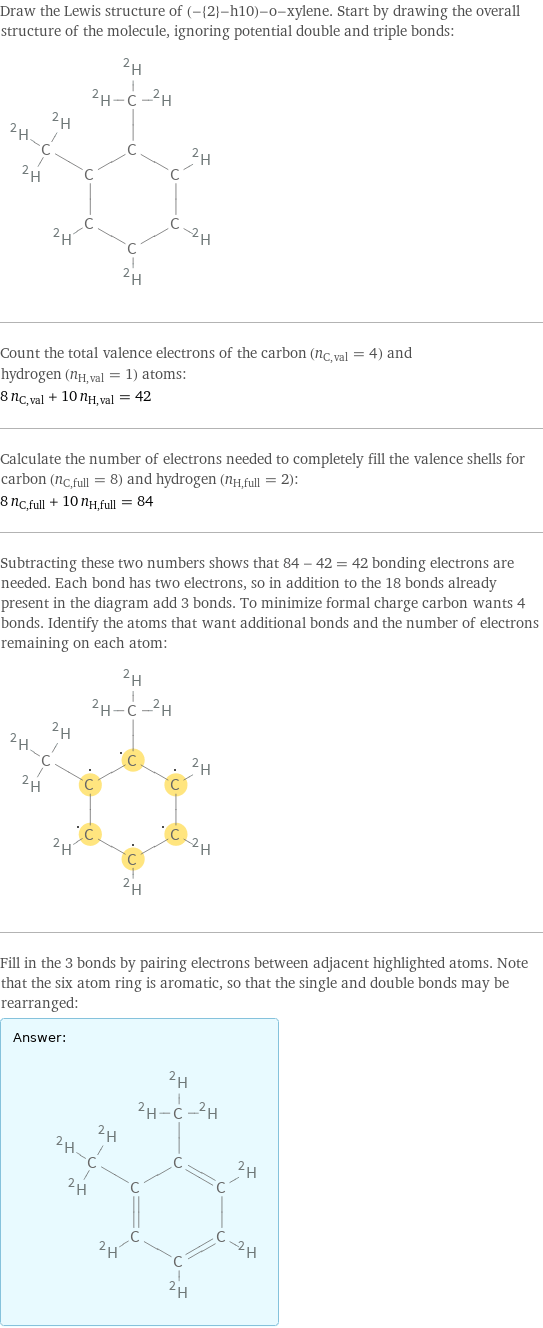
Draw the Lewis structure of (-{2}-h10)-o-xylene. Start by drawing the overall structure of the molecule, ignoring potential double and triple bonds: Count the total valence electrons of the carbon (n_C, val = 4) and hydrogen (n_H, val = 1) atoms: 8 n_C, val + 10 n_H, val = 42 Calculate the number of electrons needed to completely fill the valence shells for carbon (n_C, full = 8) and hydrogen (n_H, full = 2): 8 n_C, full + 10 n_H, full = 84 Subtracting these two numbers shows that 84 - 42 = 42 bonding electrons are needed. Each bond has two electrons, so in addition to the 18 bonds already present in the diagram add 3 bonds. To minimize formal charge carbon wants 4 bonds. Identify the atoms that want additional bonds and the number of electrons remaining on each atom: Fill in the 3 bonds by pairing electrons between adjacent highlighted atoms. Note that the six atom ring is aromatic, so that the single and double bonds may be rearranged: Answer: | |
3D structure

3D structure
Basic properties
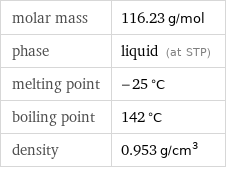
molar mass | 116.23 g/mol phase | liquid (at STP) melting point | -25 °C boiling point | 142 °C density | 0.953 g/cm^3
Units

Liquid properties (at STP)

density | 0.953 g/cm^3 vapor pressure | 50 mmHg (at 20 °C) refractive index | 1.502
Units

Non-standard atom properties

H-2 | 10
Chemical identifiers
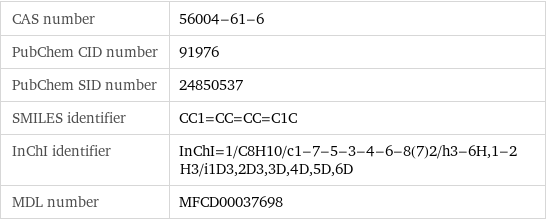
CAS number | 56004-61-6 PubChem CID number | 91976 PubChem SID number | 24850537 SMILES identifier | CC1=CC=CC=C1C InChI identifier | InChI=1/C8H10/c1-7-5-3-4-6-8(7)2/h3-6H, 1-2H3/i1D3, 2D3, 3D, 4D, 5D, 6D MDL number | MFCD00037698
NFPA label

NFPA label
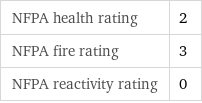
NFPA health rating | 2 NFPA fire rating | 3 NFPA reactivity rating | 0
Safety properties
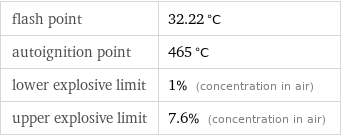
flash point | 32.22 °C autoignition point | 465 °C lower explosive limit | 1% (concentration in air) upper explosive limit | 7.6% (concentration in air)

DOT hazard class | 3 DOT numbers | 1307